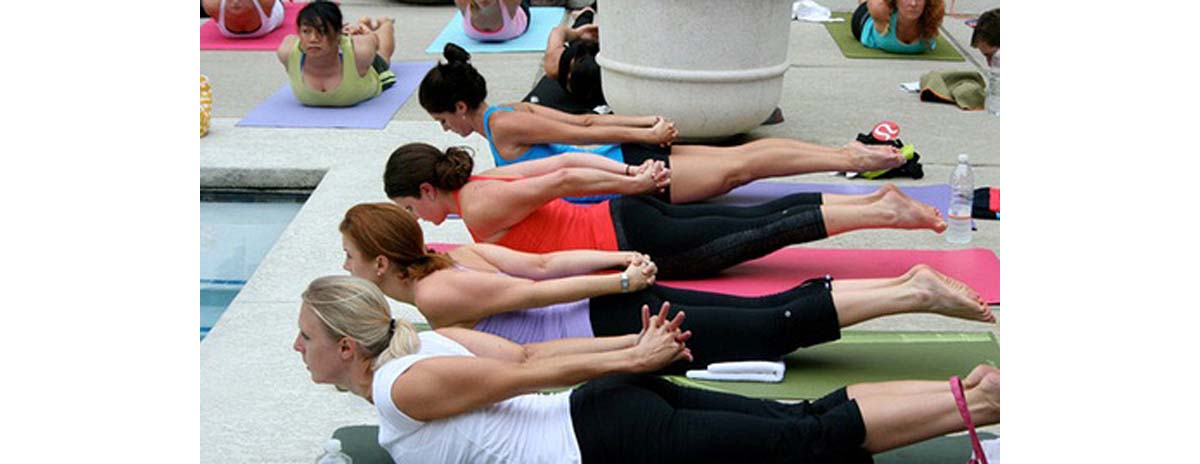An Overview of Abdominal Muscles
Your abdominal muscles work as antagonists to your back muscles and properly trained abs can significantly relieve the strain from your back muscles. Your abs assist you with sitting, standing, running, jumping and lifting – basically any movement that involves your core. It is very important to have well-developed abdominal muscles for your overall health and physical performance.
Individuals with back problems need to take special care when training their abdominal muscles. The movement of the hips and spine needs to be kept to a minimum and it is often best to consult a physiotherapist to confirm a list of ab exercises that are safe for you to perform.
Therapeutic stretching and strengthening exercises can also be performed in an attempt to improve back problems. Muscle imbalances can be addressed by a fitness professional or qualified coach, and it is best that these problems are detected early so that muscle flexibility can be restored as soon as possible.
What Do you Need to Know about Core Stability?
Your core can be defined as all of the muscles and connective tissue that surround your spine. Basically, your core is what holds your spine upright. Core strengthening exercises are very healthy to do; just ensure that you are training and developing all of the muscle groups surrounding your core, as opposed to only one section such as your lower abs. Your core can be destabilized if you concentrate on strengthening only one muscle group.There are three muscle groups that support the spine:
- Obliques – also called Rotators, these muscles are used to stabilize the spine when we are in an upright position. These muscles can also help to rotate the spine and maintain a proper posture.
- Flexors – This muscle group is responsible for controlling the lower spine, and provides support to the spine from the front. It also helps to adduct the hip (moving the thigh inwards to the body).
- Extensors – These muscles are used to strengthen the back, when we are standing, lifting, and abducting the hip (moving the thigh away from the body).
Ab Exercises that Prevent Back Problems
Back pain should not prevent you from training your abdominal muscles. There are a number of effective ab exercises that you can perform to strengthen your midsection without placing any strain on your back. Here is a breakdown of each:

The Crunch
One of the best and most popular exercises to perform is the abdominal crunch. When done correctly, performing ab crunches has no impact on your back and will not contribute to any discomfort in the spine. When performing this exercise, remember not to hollow your stomach or press your back against the floor.Instructions on performing crunches correctly:
- Lie down on your back with one knee bent
- Position your hands underneath your lower back for added support
- Slowly lift your Head and shoulders, hold briefly, and relax back down
The Pelvic Tilt
This exercise not only strengthens your abs but also helps to improve your stability and posture. Remember to breathe normally throughout this entire movement, even though it might be tempting to hold your breath.
Instructions on correctly doing pelvic tilts:
- Lie on the floor with your knees bent and your feet flat on the ground
- Tighten your abdominal muscles and press your lower back flat towards the floor
- Hold the position for a few seconds and release
Knee Side-to-Side
With this movement, you will allow your abs to do all the work while you realign your back.Instructions for knee side-to-side exercises:
- Lie on the floor with your knees bent and your feet flat on the floor
- While tightening your abdominal muscles, gently roll your knees to one side of the floor
- Go as far as you feel comfortable with, and return to the starting position
- Repeat to the other side
The Cat and Camel
The cat and camel is a wonderful exercise for both your abdominal and back muscles. It stimulates the nerve roots of your spine and it is recommended for people with back problems.
Instructions on performing the cat and camel:
- Get down on your hands and knees
- Slowly raise your head and hips so that your stomach and midsection sag down like the area between a camel’s humps
- Lower your head between your arms while arching your back, much like a stretching cat
- Repeat 4 to 8 times
The Superman
The Superman exercise is considered to be the single most effective exercise for people with back problems.Instructions on doing a Superman the proper way:
- Lie face down on the ground, with your arms stretched out to the front
- Lift your head and stretch your arms in front of you
- Contract your back muscles so that your feet and chest life off the ground, as high as you can
- Hold this position for as long as you can
- Repeat 4 to 8 times
The Plank
Planks help to stabilize yourself in one position, so doing planks works both your abs and your back muscles. These exercises also work the transverse abdominus, as opposed to normal crunches that only works the rectus abdominus. Planks are safe to be performed by people with back problems.Instructions on doing a plank correctly:
- Lie face-down on the ground, and lift yourself up, balancing your body weight on your elbows and toes. Keep your elbows close to your body, at a 90 degree angle
- Keep your torso straight, with no sagging or bending
- Hold this position for as long as you can
All of these exercises are perfect for strengthening your abdominal muscles without placing any pressure on your back and spine. They are safe to perform for people with back problems and they are encouraged by sport coaches and physiotherapists. With slight modifications to certain exercises, we can safely allow anyone to perform these movements without any issues back pain.
Before beginning a regimen of back-strengthening exercises at home, however, it is best for people with back problems to consult a physiotherapist or personal trainer familiar with back problems. This way, you can make sure that the exercises you do are safe for you, and you are carrying them out in the correct way.
- BodyBuilding.com http://www.bodybuilding.com/fun/gastelu19.htm
- pine-Health: www.spine-health.com/wellness/exercise/back-exercises-and-abdominal-exercise-recommendations
- Photo courtesy of lululemonathletica on Flickr: www.flickr.com/photos/lululemonathletica/4838497721
- Photo courtesy of jlee43 on Flickr: www.flickr.com/photos/jlee43/366598899
- Photo by steadyhealth.com
- www.youtube.com/watch?v=Ef6VCmxMVcI
- www.youtube.com/watch?v=e76fF7Qa68s
- www.youtube.com/watch?v=cS-8TqvXX80
- www.youtube.com/watch?v=L_y3N6ugOAg
- www.youtube.com/watch?v=0JlcNknyoFk
- www.youtube.com/watch?v=k2366tXL2EM
- www.youtube.com/watch?v=TrdUeRUwWtE
- www.youtube.com/watch?v=Dj3fHKMWN8g
- www.youtube.com/watch?v=r7WmLNj-e24
- www.youtube.com/watch?v=UImbPqGzJP4
- www.youtube.com/watch?v=5hiklTA5wMc
- www.youtube.com/watch?v=AR47kwgudoY


